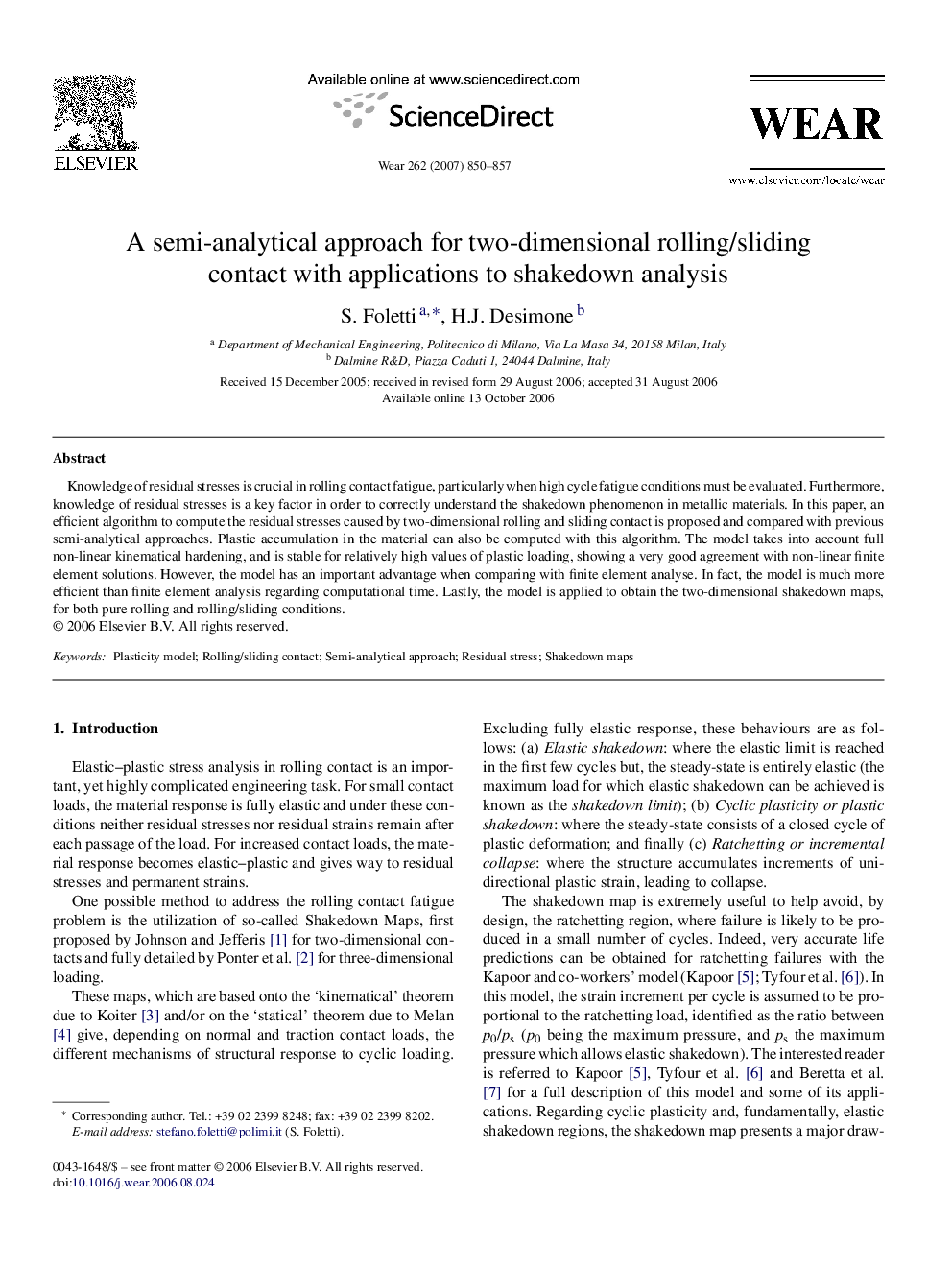| Article ID | Journal | Published Year | Pages | File Type |
|---|---|---|---|---|
| 619730 | Wear | 2007 | 8 Pages |
Abstract
Knowledge of residual stresses is crucial in rolling contact fatigue, particularly when high cycle fatigue conditions must be evaluated. Furthermore, knowledge of residual stresses is a key factor in order to correctly understand the shakedown phenomenon in metallic materials. In this paper, an efficient algorithm to compute the residual stresses caused by two-dimensional rolling and sliding contact is proposed and compared with previous semi-analytical approaches. Plastic accumulation in the material can also be computed with this algorithm. The model takes into account full non-linear kinematical hardening, and is stable for relatively high values of plastic loading, showing a very good agreement with non-linear finite element solutions. However, the model has an important advantage when comparing with finite element analyse. In fact, the model is much more efficient than finite element analysis regarding computational time. Lastly, the model is applied to obtain the two-dimensional shakedown maps, for both pure rolling and rolling/sliding conditions.
Related Topics
Physical Sciences and Engineering
Chemical Engineering
Colloid and Surface Chemistry
Authors
S. Foletti, H.J. Desimone,
